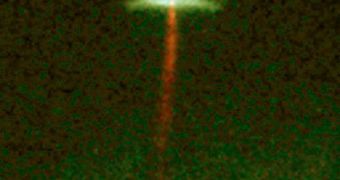Last year ended in a frenzy of amazing discoveries in our solar system. The LCROSS probe found definite evidence of water on the Moon, Cassini showed that Enceladus had a high probability of holding a liquid ocean under its icy surface, and Mars was proven again to have harbored an ocean in its earliest day. While these results are absolutely remarkable in themselves, some are not entirely satisfied with them, and want to push things even further. These people are scientists who are currently investigating methods of discovering water beyond the solar system, on exoplanets, Space reports.
One possible method of making this type of studies a reality is infrared spectroscopy. The method can be used to screen the protoplanetary discs around stars, or the dust that remained following their birth. If these areas contain hydrous minerals called phyllosilicates, then this could be a clear indicator of the presence of water. Naturally, we are not talking about liquid water, or even ice particles, but of trace amounts of the stuff, which make up a large portion of these minerals. Using IR spectroscopy in this manner is described in a paper published in a recent issue of the scientific journal Astrobiology.
“If you find phyllosilicates, you have most likely found liquid water. The objective was to try to determine whether we could actually detect these wonderful signatures of hydrated minerals almost always produced by the interaction of liquid water with rock,” Missouri State University Department of Physics, Astronomy and Materials Science visiting Professor Melissa Morris explains. The expert, who is also the author of the recent paper, is a research affiliate at the Arizona State University (ASU) School of Earth and Space Exploration.
What's very interesting about this approach is that, by studying a young star's protoplanetary disc, researchers could be able to determine what type of planet would eventually form around that particular celestial object. If the disc contains no traces of water, then a rocky, barren world will most definitely form. “I'm a huge advocate for looking for water in our own solar system, but just to understand the process of planetary system formation, we need to go outside our solar system and look at other systems as well,” Morris adds. The investigator is currently peering through data from the NASA Spitzer Space Telescope, an infrared observatory, in order to apply the new knowledge to real scenarios.

 14 DAY TRIAL //
14 DAY TRIAL //